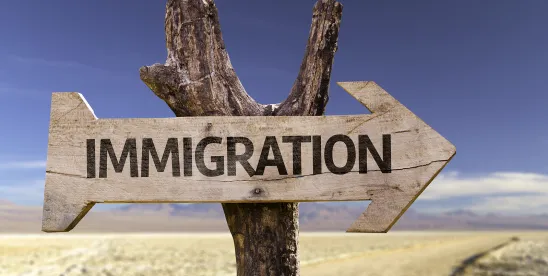On June 4, 2025, President Trump announced a new travel ban through a proclamation titled “Restricting the Entry of Foreign Nationals to Protect the United States from Foreign Terrorists and Other National Security and Public Safety Threats.” The ban, which echoes his 2017 efforts to restrict entry to the United States for nationals of certain countries deemed to be national security risks, expands the number of affected countries and divides them into two categories: Full Suspension of Entry and Partial Suspension of Entry. It will go into effect on June 9, 2025 with no announced end date.
Key provisions include:
- Full Entry Bans: Nationals from the following 12 countries are barred from entering the United States: Afghanistan, Burma (Myanmar), Chad, Republic of the Congo, Equatorial Guinea, Eritrea, Haiti, Iran, Libya, Somalia, Sudan, and Yemen.
- Partial Entry Ban: Seven additional countries—Burundi, Cuba, Laos, Sierra Leone, Togo, Turkmenistan, and Venezuela—face the following partial entry restrictions: halting issuance of new visitor (B1/B2), student (F, M), and exchange (J) visas and reduction in validity for nearly all other nonimmigrant visa categories, including all employment visa categories (subject to the exceptions listed below).
- Justification: The proclamation cites the following national security concerns as the basis for the new ban, with varied reasons listed for each suspended country: sponsorship of terrorism, lack of sufficient government to issue passports and civil documents, lack of appropriate vetting and screening measures, high overstay rates for past visa recipients, and refusal to accept back nationals being removed from the United States, among others.
- Applicability: The travel ban only applies to nationals of the designated countries who, on June 9, 2025: (1) are outside the U.S. and (2) do not hold a valid, issued U.S. visa.
- Exceptions and Waivers:
- Categorical Exceptions: The ban does not apply to the following:
- U.S. Lawful Permanent Residents (LPR or green card holder).
- Dual nationals of the restricted countries traveling on the passport of an unrestricted country (e.g., Haitian/French dual national entering the U.S. on their French passport).
- Individuals traveling on most diplomatic visas.
- Athletes and related personnel and families entering to participate in the World Cup, Olympics, or other “major sporting event.”
- Immediate family members seeking to enter on immigrant visas (i.e., applying for LPR status from outside the US).
- Most applicants for adoption.
- Certain Special Immigrant Visas (Afghan and US Government employees).
- Immigrant visas for certain ethnic and religious minorities form Iran.
- Those granted asylum or protections under the Convention Against Torture (CAT), and those admitted to the US as a refugee.
- Case-by-case Waivers: The Attorney General and Secretary of State may designate individual exceptions for those entering in the national interest of the US. Mechanisms for these waivers have not been announced and will likely be implemented through U.S. embassies and consulates as during President Trumps first term.
- Categorical Exceptions: The ban does not apply to the following:
The new travel ban is expected to face legal challenges, likely even before it’s effective date five days after its issuance. It is drafted to narrow the scope and reasons for the restrictions, so it remains to be seen whether the courts will allow it to go into full or partial effect on June 9, 2025.




 />i
/>i
